A list of more Climate and Energy Policy Laboratory publications is also available.
Featured Publications
Brian An's recent work on “The influence of institutional single-family rental investors on homeownership: who gets targeted and pushed out of the local market?” examines how the rising presence of single-family rental investors in the market has impacted homeownership.
Leveraging granular spatial and temporal variations in large investment firms’ transaction activities over 800 neighborhoods in the Atlanta metropolitan area between 2007 and 2016, he finds that the concentrated investment in single-family rentals weakened local homeownership, mainly for Black families. In contrast, evidence does not support the claim that smaller scale corporate investors dampened homeownership. The institutional scale matters in explaining a significantly diminished homeownership during this period. His work was covered by the News and Observer.
Brian An also published a journal article on “Following neighbors or regional leaders? Unpacking the effect of geographic proximity in local climate policy diffusion.”
The work, together with doctoral student Min-Kyeong Cha, he examined spatially dynamic policy diffusion among municipal governments. Using city-level climate action plans (CAPs) adopted in Southern California during 2000-2018 as a study frame, the analysis unpacks spatial variations in the effects of geographic neighbors and regional leaders. This paper provides insight into the importance of regional policy leadership and the powerful role of neighboring cities to the adoption of CAPs.
Marilyn Brown has been working with her grad students to understand why households adopt electrification technologies. Read about the research of her team her
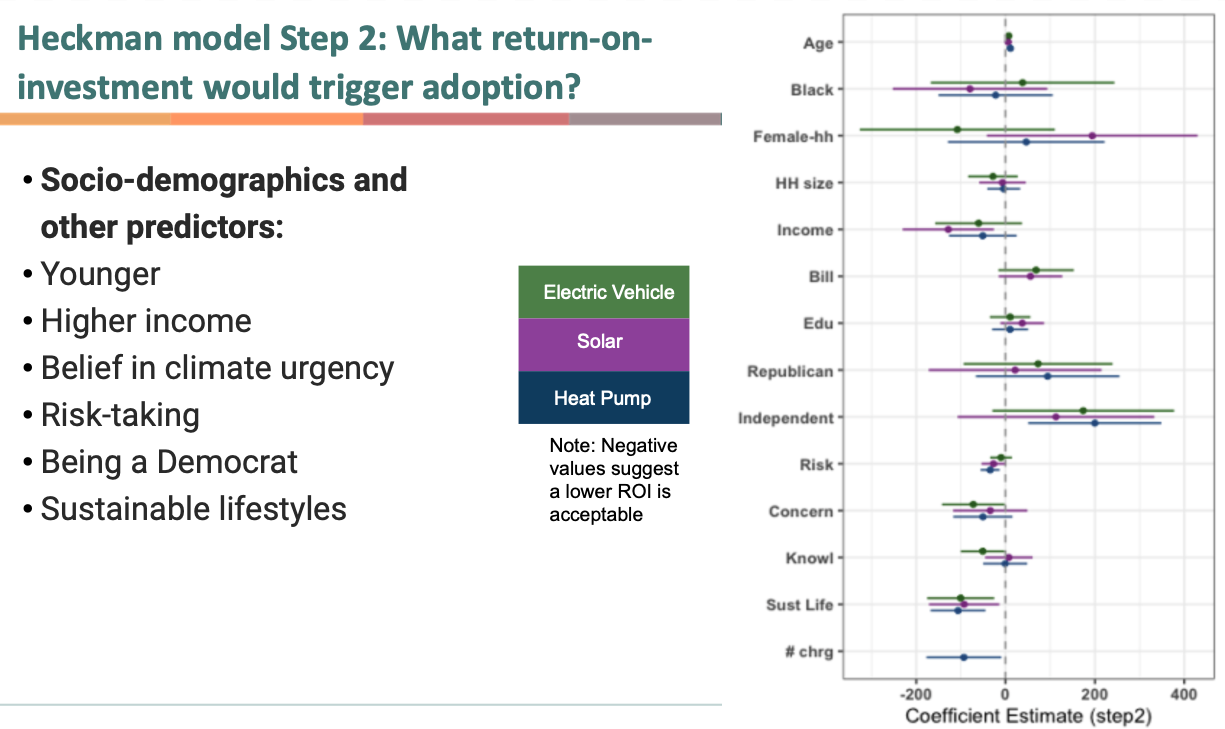 e:
e:Brown, Marilyn A., Snehal Kale, Min-kyeong Cha, and Oliver Chapman. 2023. “What Return-on-Investment is Required for Household Electrification? A New Approach to Willingness to Pay,” Applied Energy Vol. 338 (1) 120791. For presentations about this paper, visit this website and watch this YouTube video.
- Valerie Thomas has been working in Rwanda for several years, and her research can be found in many recent publications, such as these.
- Musselman, A., Thomas, V. M., Nazzal, D., Papageorgiou, D. J., Venkatesh, A., Mallapragada, D. S. The Impact of Development Priorities on Power System Expansion Planning in Sub-Saharan Africa. Energy Systems 3: 461–492, 2022. https://doi.org/10.1007/s12667-021-00433-z
- Muza, O., Thomas, V. M. Cultural norms to su
 pport gender equity in energy development: Grounding the productive use agenda in Rwanda. Energy Research and Social Science. 89, 102543, 2022. https://doi.org/10.1016/j.erss.2022.102543 Valerie Thomas has been working in Rwanda for several years, and her research can be found in many recent publications, such as these.
pport gender equity in energy development: Grounding the productive use agenda in Rwanda. Energy Research and Social Science. 89, 102543, 2022. https://doi.org/10.1016/j.erss.2022.102543 Valerie Thomas has been working in Rwanda for several years, and her research can be found in many recent publications, such as these.
- Vivek Shastry, D. Cale Reeves, Nicholas Willems, Varun Rai. 2022. Policy and behavioral response to shock events: An agent-based model of the effectiveness and equity of policy design features. PLoS One.
When shock events occur – e.g. the onset of a global pandemic – policy responds. But policy responses are seldom uniform. Analysis of impact of shelter-in-place policy design features exposes critical trade-offs that shift the remaining burden onto those least well prepared to shoulder it.
- Matisoff, Daniel C., Marilyn A. Brown, and Snehal Kale. 2022. “Modernizing the Energy Infrastructure at Federal Facilities: Should Utilities Play a Bigger Role?” Electricity Journal, Volume 34 (2), March. https://doi.org/10.1016/j.tej.2022.107078
Federal facilities have increasingly used performance contracting t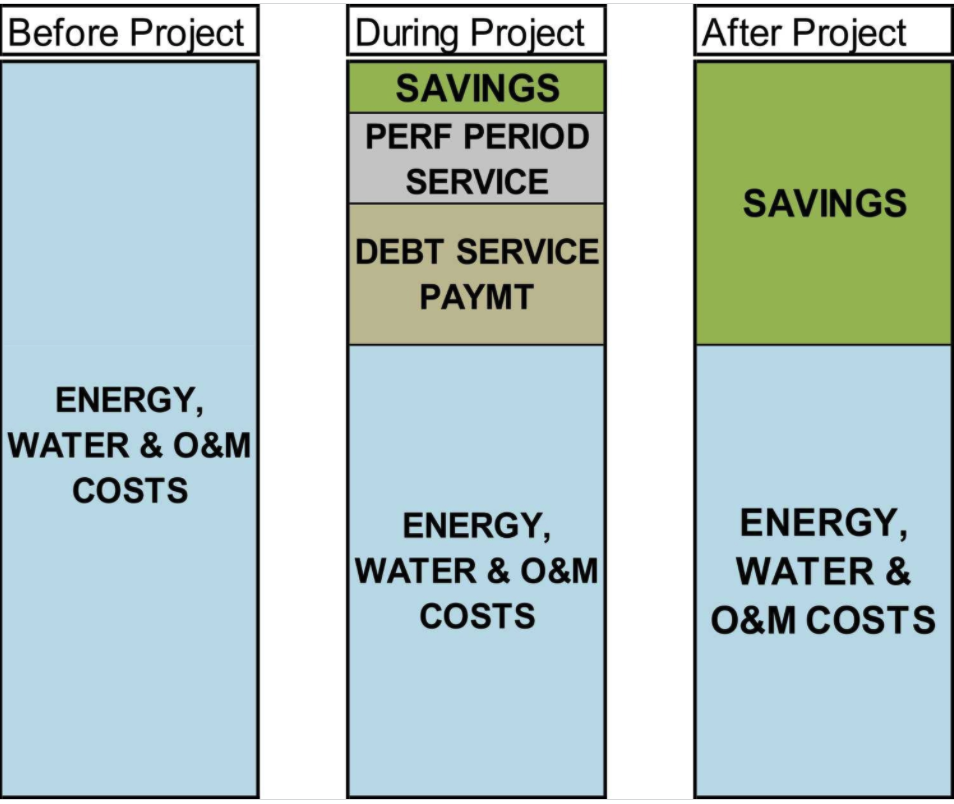 o finance energy efficiency measures. Utility Energy Performance Contracts (UESCs) have received less attention despite having similar goals and processes as Energy Savings Performance Contracts (ESPCs). Indeed, UESCs have historically received only 1/10th of the funding of ESPCs. This paper provides a comparison between the two performance contracting models and concludes that federal agencies should explore UESCs, where possible, as a potentially more cost-effective way to achieve energy savings. See the Georgia Tech Working Paper.
o finance energy efficiency measures. Utility Energy Performance Contracts (UESCs) have received less attention despite having similar goals and processes as Energy Savings Performance Contracts (ESPCs). Indeed, UESCs have historically received only 1/10th of the funding of ESPCs. This paper provides a comparison between the two performance contracting models and concludes that federal agencies should explore UESCs, where possible, as a potentially more cost-effective way to achieve energy savings. See the Georgia Tech Working Paper.
- Favero, A., Mendelsohn, R., Sohngen, B., & Stocker, B. (2021). Assessing the long-term interactions of climate change and timber markets on forest land and carbon storage. Environmental Research Letters, 16(1), 014051.
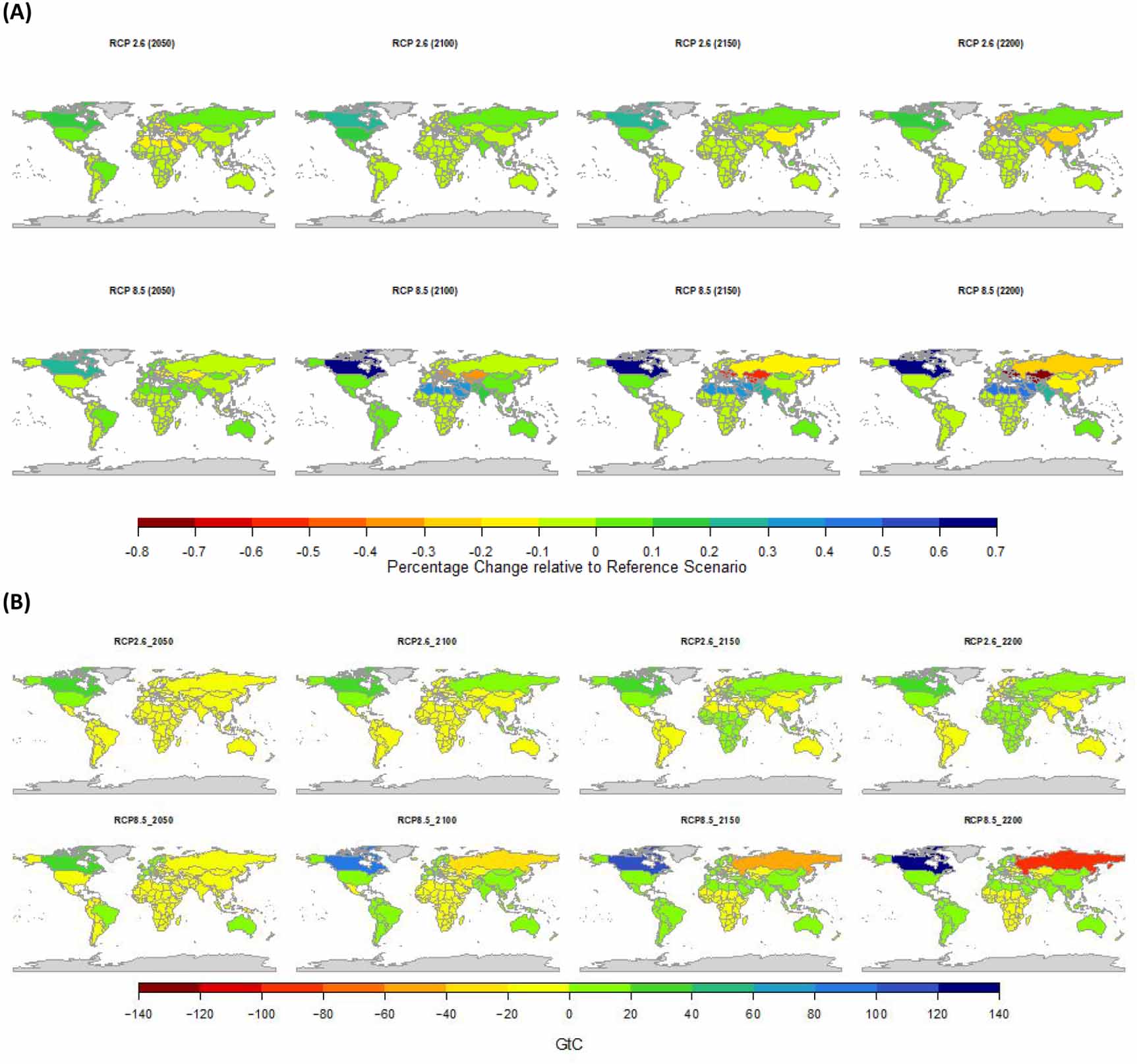
What happens to forests and the global timber market in the long-term future climate change scenarios, where forests expand in the high north and are replaced by other types of vegetation in the south? In “Assessing the long-term interactions of climate change and timber markets on forest land and carbon storage” Dr. Favero and co-authors from Yale, OSU and ETH Zurich looked into the crystal ball combining a global vegetation model and an economic model of forests with different climate and socio-economic drivers to project possible future scenarios.
- Brown, M.A, Soni, A., Doshi, A.D, King, C. (2020). The persistence of high energy burden: A bibliometric analysis of vulnerability, poverty, and exclusion in the United States. Energy Research & Social Science, 70, 101756.
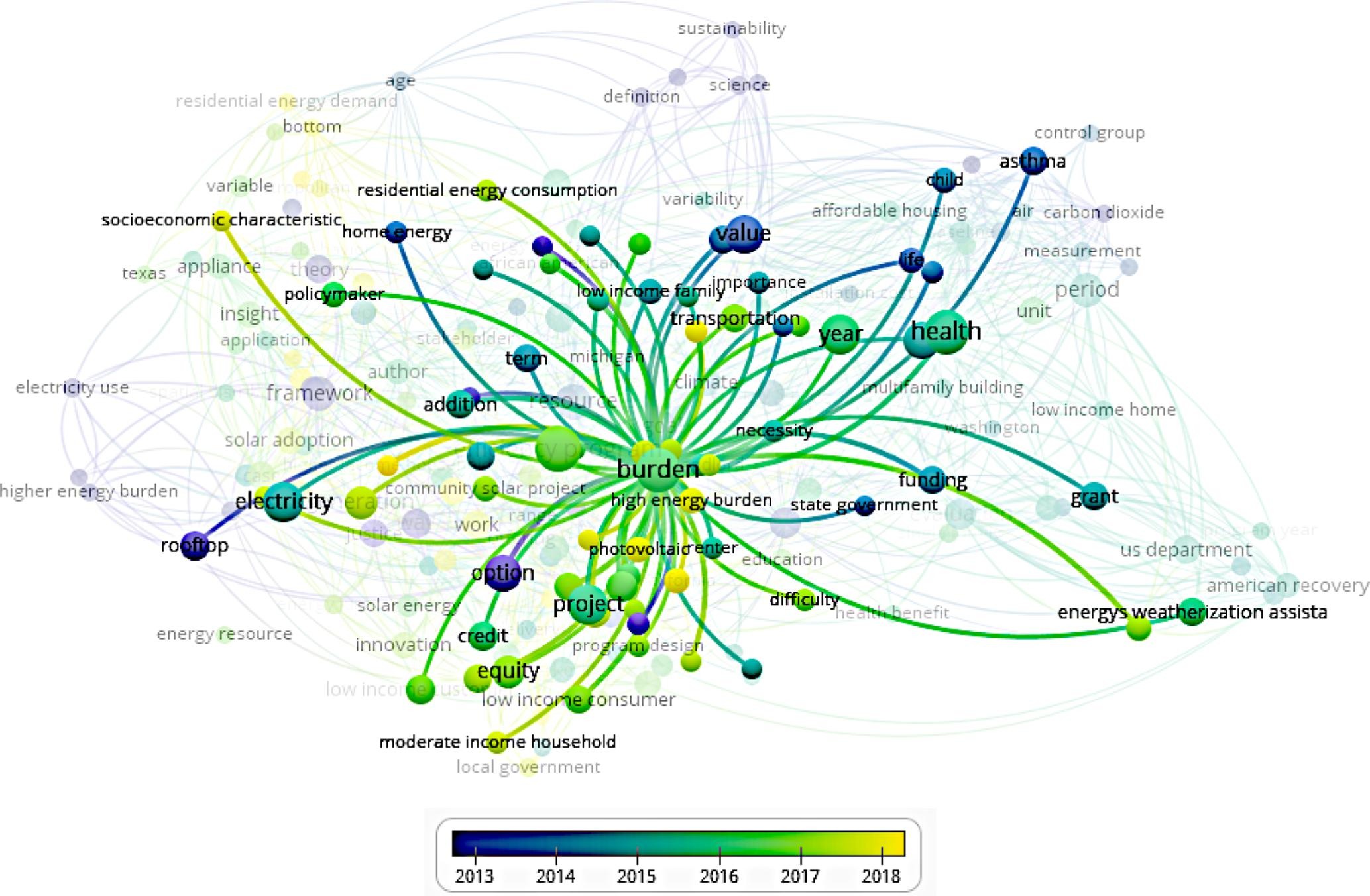
At a time when health care systems across the country are stressed with meeting the needs of those afflicted with the Covid-19 pandemic, substantial evidence links energy burdens to conditions that can increase vulnerabilities to the coronavirus and psychological stress associated with the threat of losing electric connections due to non-payment. Many utilities have initiated moratoria against disconnections in the midst of the pandemic. After these moratoria are lifted, utilities will face unparalleled levels of economic and social crisis among their customers. It is uncertain how arrearages will be managed during what will likely be an extended period of increased debt and extended repayment. - Brown, M.A., A, Soni, M.V. Lapsa, K.A. Southworth, M. Cox. (2020) “High Energy Burden and Low-Income Energy Affordability: Conclusions from a Literature Review,” Progress in Energy, Vol. 2 (4), https://dx.doi.org/10.1088/2516-1083/abb954
In an era of U.S. energy abundance, the persistently high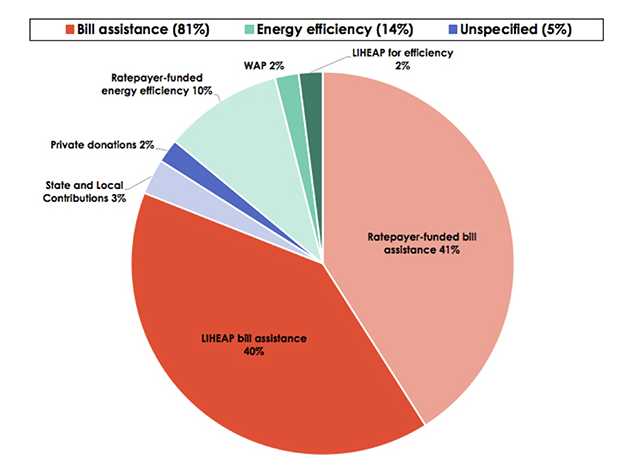 energy bills paid by low-income households is troubling. After decades of weatherization and bill-payment programs, low-income households still spend a higher percent of their income on electricity and gas bills than any other income group. Their energy burden is not declining, and it remains persistently high in particular geographies such as the South, rural America, and minority communities. As public agencies and utilities attempt to transition to a sustainable energy future, many of the programs that promote energy efficiency, rooftop solar, electric vehicles, and home batteries are largely inaccessible to low-income households due to affordability barriers. Going forward, behavioral economics, data analytics, and leveraging health care benefits are highlighted as promising opportunities.
energy bills paid by low-income households is troubling. After decades of weatherization and bill-payment programs, low-income households still spend a higher percent of their income on electricity and gas bills than any other income group. Their energy burden is not declining, and it remains persistently high in particular geographies such as the South, rural America, and minority communities. As public agencies and utilities attempt to transition to a sustainable energy future, many of the programs that promote energy efficiency, rooftop solar, electric vehicles, and home batteries are largely inaccessible to low-income households due to affordability barriers. Going forward, behavioral economics, data analytics, and leveraging health care benefits are highlighted as promising opportunities.
Other Recent Publications
-
Scientific American story on green jobs. Would a Green
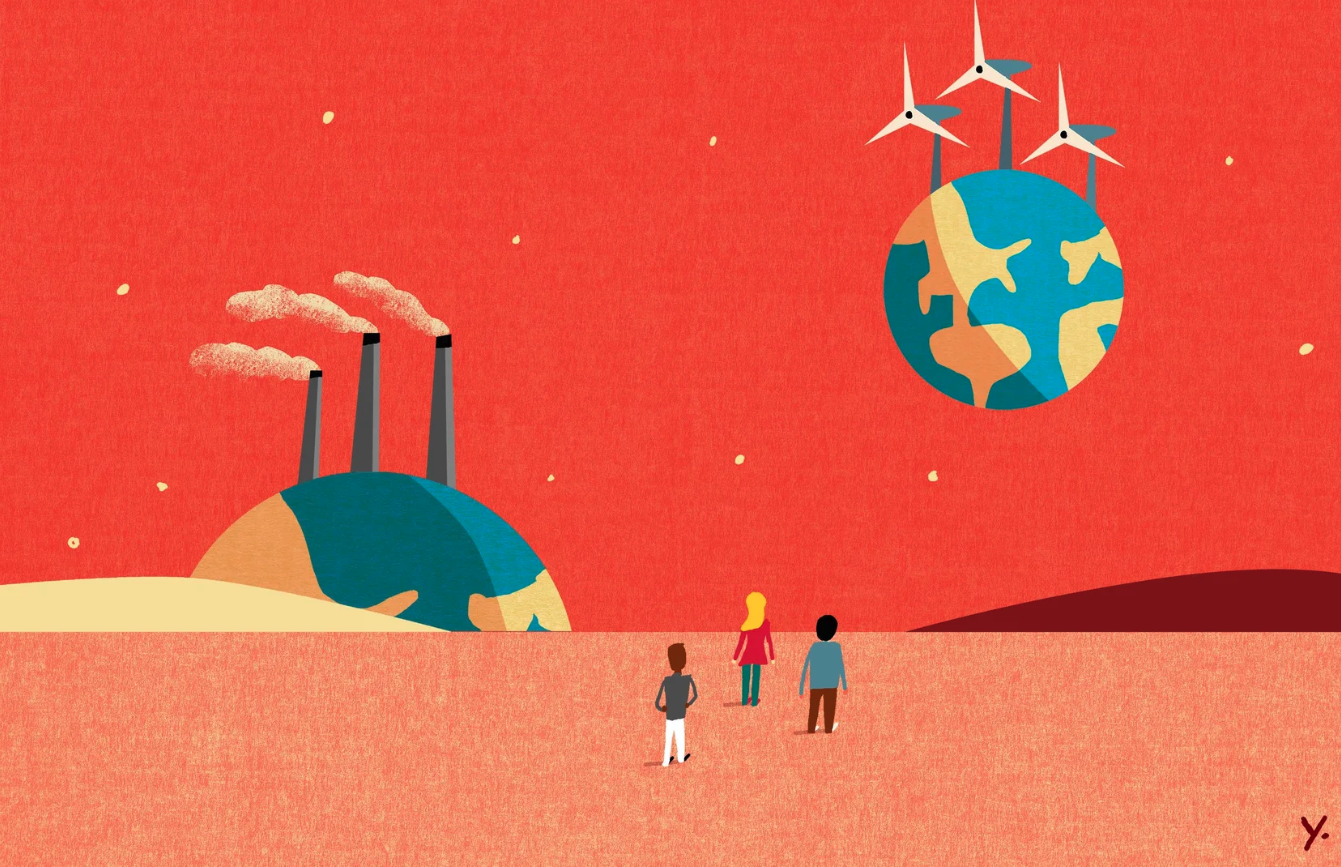 New Deal Add or Kill Jobs? - Scientific American (2019). Political candidates in the U.S. have been announcing plans to address climate change at a record pace, and elected officials are releasing various forms of carbon tax legislation. These initiatives are rekindling debate about how much of a price to put on carbon and what effects the options would have on the environment and the economy. Our analysis finds that starting with a moderate, but escalating tax would have positive job impacts: "a cleaner-energy approach motivated by carbon taxes would promote innovation, open up new markets, and produce an economy with more jobs—a greener economy worth investing in."
New Deal Add or Kill Jobs? - Scientific American (2019). Political candidates in the U.S. have been announcing plans to address climate change at a record pace, and elected officials are releasing various forms of carbon tax legislation. These initiatives are rekindling debate about how much of a price to put on carbon and what effects the options would have on the environment and the economy. Our analysis finds that starting with a moderate, but escalating tax would have positive job impacts: "a cleaner-energy approach motivated by carbon taxes would promote innovation, open up new markets, and produce an economy with more jobs—a greener economy worth investing in." -
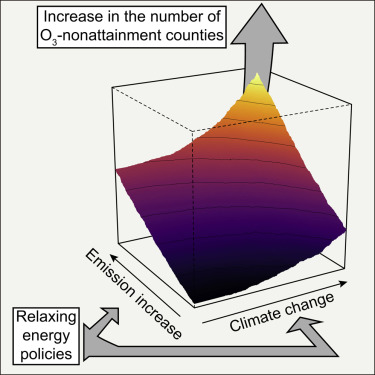 Shen, H., Chen, Y., Li, Y., Pavur, G., Brown, M., Driscoll, C. (2019) "Relaxing Energy Policies Coupled with Climate Change Will Significantly Undermine Efforts to Attain Ozone Standards," One Earth 1, 1-11. The Trump administration's relaxation of energy policies combined with climate change will cause air quality to decline in the U.S. A new paper by Georgia Tech scientists focuses on ground-level ozone created when nitrogen oxide from the combustion of fossil fuels and other volatile organic compounds interact with heat and sunlight. Ozone is detrimental to human health and ecosystems and is often overlooked when energy policies are being debated. Our forecast of increased ozone pollution is in stark contrast to the Obama-era Clean Power Plan, CAFE Standards, and renewable incentives, which would have resulted in cleaner air.
Shen, H., Chen, Y., Li, Y., Pavur, G., Brown, M., Driscoll, C. (2019) "Relaxing Energy Policies Coupled with Climate Change Will Significantly Undermine Efforts to Attain Ozone Standards," One Earth 1, 1-11. The Trump administration's relaxation of energy policies combined with climate change will cause air quality to decline in the U.S. A new paper by Georgia Tech scientists focuses on ground-level ozone created when nitrogen oxide from the combustion of fossil fuels and other volatile organic compounds interact with heat and sunlight. Ozone is detrimental to human health and ecosystems and is often overlooked when energy policies are being debated. Our forecast of increased ozone pollution is in stark contrast to the Obama-era Clean Power Plan, CAFE Standards, and renewable incentives, which would have resulted in cleaner air. -
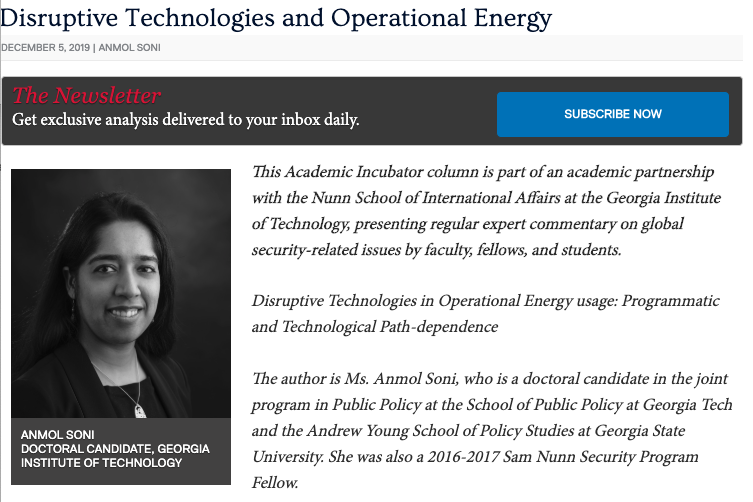 Doctoral Candidate Anmol Soni's article in The Cipher Brief’s Academic incubator program. Disruptive Technologies in Operational Energy usage: Programmatic and Technological Path-dependence (2019)
Doctoral Candidate Anmol Soni's article in The Cipher Brief’s Academic incubator program. Disruptive Technologies in Operational Energy usage: Programmatic and Technological Path-dependence (2019) -
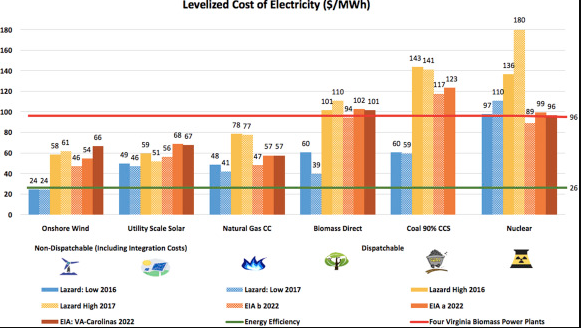 Brown, M.A., A. Favero, V.M. Thomas, and A. Banboukian. (2019) “The Economic and Environmental Performance of Biomass Power as an Intermediate Resource for Power Production,” Utilities Policy 58: 52-62. https://authors.elsevier.com/a/1YzH53Peo9VR76
Brown, M.A., A. Favero, V.M. Thomas, and A. Banboukian. (2019) “The Economic and Environmental Performance of Biomass Power as an Intermediate Resource for Power Production,” Utilities Policy 58: 52-62. https://authors.elsevier.com/a/1YzH53Peo9VR76 -
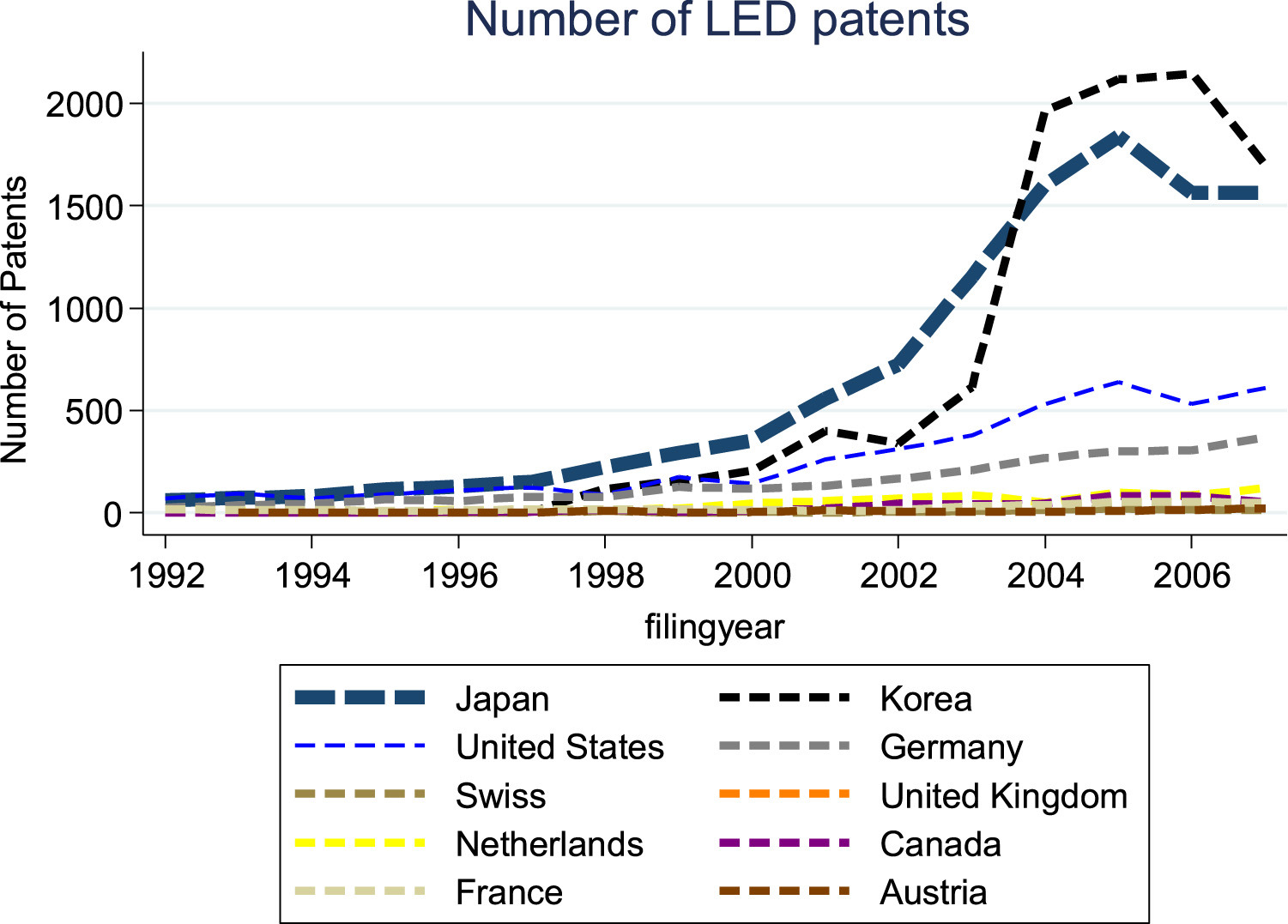 Kim, Yeong Jae and Marilyn A. Brown (2019) “Impact of Energy-Efficiency Policies on Innovation: The Case of Lighting Technologies." Energy Policy, 128, 539-552.(High resolution graphic here: https://ars.els-cdn.com/content/image/1-s2.0-S0301421519300382-gr1_lrg.jpg)
Kim, Yeong Jae and Marilyn A. Brown (2019) “Impact of Energy-Efficiency Policies on Innovation: The Case of Lighting Technologies." Energy Policy, 128, 539-552.(High resolution graphic here: https://ars.els-cdn.com/content/image/1-s2.0-S0301421519300382-gr1_lrg.jpg) -
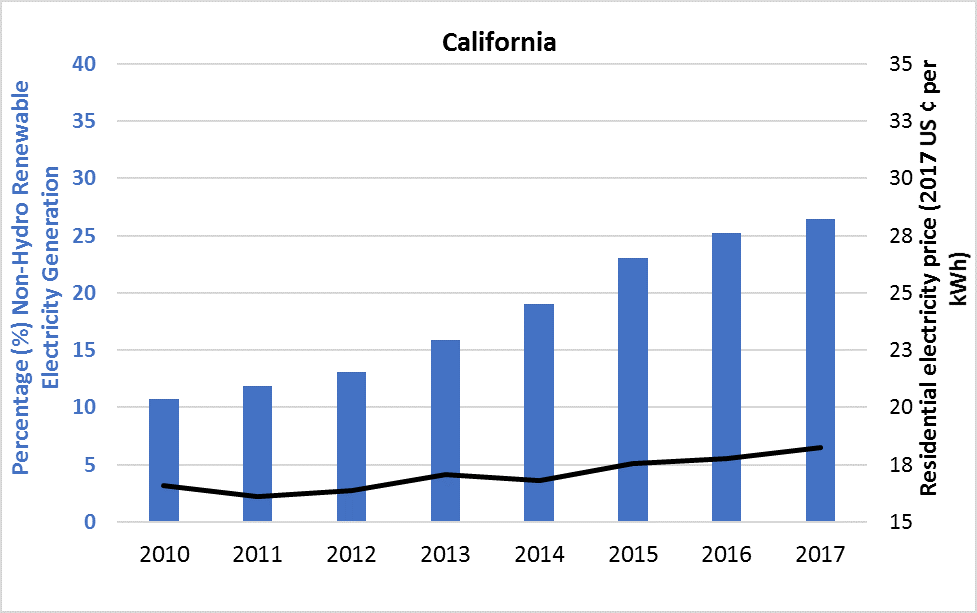 Monyei, C., B. Sovacool, M. Brown, K. Jenkins, S. Viriri, and Y. Li. (2019) “Justice, Poverty, and Electricity Decarbonization,” The Electricity Journal, 32(1), 47-51. This paper discusses the “decarbonization paradox”: a situation where apparently beneficial increases in electricity supply capacity coupled with more diversified and renewable energy mix is being achieved at the expense of household energy security and affordability. Data from Germany, California, and Australia are examined. We point to several strategies to avoid the paradox, including load-shifting, EE, coal-to-gas switching, and CCS.
Monyei, C., B. Sovacool, M. Brown, K. Jenkins, S. Viriri, and Y. Li. (2019) “Justice, Poverty, and Electricity Decarbonization,” The Electricity Journal, 32(1), 47-51. This paper discusses the “decarbonization paradox”: a situation where apparently beneficial increases in electricity supply capacity coupled with more diversified and renewable energy mix is being achieved at the expense of household energy security and affordability. Data from Germany, California, and Australia are examined. We point to several strategies to avoid the paradox, including load-shifting, EE, coal-to-gas switching, and CCS.
-
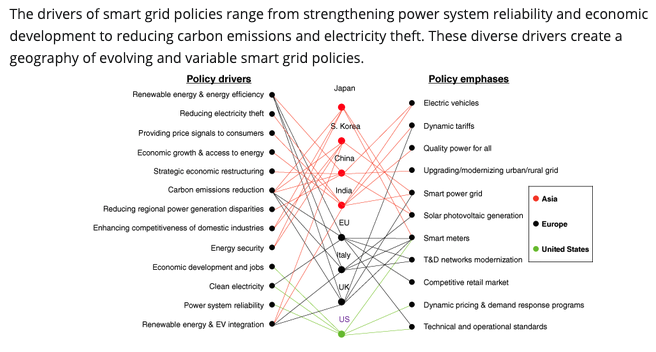 Brown, M. A., Zhou, S., & Ahmadi, M. (2018) Smart grid governance: An international review of evolving policy issues and innovations. Wiley Interdisciplinary Reviews: Energy and Environment, DOI: 10.1002/wene.290. The electric power systems of many industrialized nations are challenged by the need to accommodate distributed renewable generation, increasing demands of a digital society, growing threats to infrastructure security, and concerns over global climate change. The “smart grid” – with a two-way flow of electricity and information between utilities and consumers – can help address these challenges. This paper describes the many barriers and concerns that hinder smart-grid deployment and the drivers and motivations that promote it.
Brown, M. A., Zhou, S., & Ahmadi, M. (2018) Smart grid governance: An international review of evolving policy issues and innovations. Wiley Interdisciplinary Reviews: Energy and Environment, DOI: 10.1002/wene.290. The electric power systems of many industrialized nations are challenged by the need to accommodate distributed renewable generation, increasing demands of a digital society, growing threats to infrastructure security, and concerns over global climate change. The “smart grid” – with a two-way flow of electricity and information between utilities and consumers – can help address these challenges. This paper describes the many barriers and concerns that hinder smart-grid deployment and the drivers and motivations that promote it.
-
Hongyang Zou, Huibin Du, Marilyn A. Brown, Guozhu Mao, Large-scale PV power generation in China: A grid parity
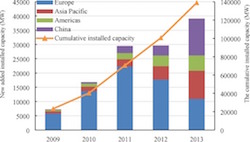 and techno-economic analysis, Energy, Available online 31 May 2017, ISSN 0360-5442, DOI 10.1016/j.energy.2017.05.192. (Image: Figure 1. The world cumulative and new added PV installed capacity from 2009 to 2013)
and techno-economic analysis, Energy, Available online 31 May 2017, ISSN 0360-5442, DOI 10.1016/j.energy.2017.05.192. (Image: Figure 1. The world cumulative and new added PV installed capacity from 2009 to 2013)
-
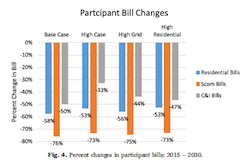
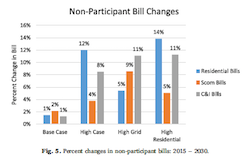 Johnson, Erik, Ross Beppler, Christopher Blackburn, Benjamin Staver, Marilyn Brown, and Daniel Matisoff. (2017) “Peak Shifting and Cross-Class Subsidization: The Impacts of Solar PV on Changes in Electricity Costs” Energy Policy 106: 436-444. (Image: Figure 5. Percent changes in non-participant bills: 2015 – 2030)
Johnson, Erik, Ross Beppler, Christopher Blackburn, Benjamin Staver, Marilyn Brown, and Daniel Matisoff. (2017) “Peak Shifting and Cross-Class Subsidization: The Impacts of Solar PV on Changes in Electricity Costs” Energy Policy 106: 436-444. (Image: Figure 5. Percent changes in non-participant bills: 2015 – 2030) -
Brown, M.A. & Wang, Y. 2017. Energy-efficiency skeptics and advocates: the debate heats up as the stakes rise. Energy Efficiency. DOI 10.1007/s12053-017-9511-x (Image: Figure 2. Typology of contentious EE issues)
-
Brown, M.A. 2017. Commercial cogeneration benefits depend on market rules, rates, and policies. Environmental Research Letters 12 (2017) 031003. DOI 10.1088/1748-9326/aa6044
-
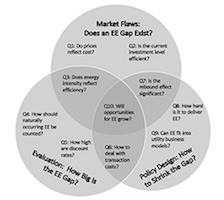 Brown, Marilyn A. and Daniel D'Arcy. 2017. "Energy Resources and Use," in The International Encyclopedia of Geography:People, the Earth, Environment, and Technology Edited by Douglas Richardson, Noel Castree, Michael F. Goodchild, Audrey Kobayashi, Weidong Liu, and Richard A. Marston. John Wiley & Sons, Oxford, DOI 10.1002/9781118786352.wbieg1030.
Brown, Marilyn A. and Daniel D'Arcy. 2017. "Energy Resources and Use," in The International Encyclopedia of Geography:People, the Earth, Environment, and Technology Edited by Douglas Richardson, Noel Castree, Michael F. Goodchild, Audrey Kobayashi, Weidong Liu, and Richard A. Marston. John Wiley & Sons, Oxford, DOI 10.1002/9781118786352.wbieg1030.
